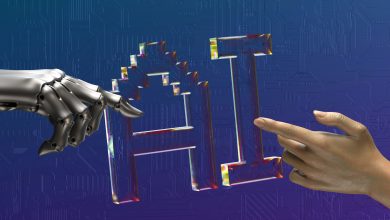
The Real Problem Isn’t AI
“AI won’t take your job. Someone using AI will.”
Cute line. But the reality is much more likely to be: “Someone who thinks they know how to use AI will.” That’s the real risk. And it’s already happening. Across industries, executives are plugging in AI where they used to have people. Not because it’s better. Because it’s cheaper. Because they read a McKinsey article.
And here’s the kicker: the people shouting loudest that “AI will take/can do all the jobs” are often the ones who stand to benefit most if we believe it. If workers think they’re replaceable, they stop negotiating. They accept worse deals. They stop pushing back.
AI isn’t steering this mess. Leadership is. And too many of them are driving blindfolded.
AI as Excuse, Not Tool
AI has the potential to sharpen your team’s edge. Or dull it entirely, depending on who’s holding the knife.
Executives chasing efficiency are using AI to replace what they don’t understand. That’s not innovation. It’s ignorance with a budget.
Replacing skilled workers with AI systems without grasping the nuance is like swapping a surgeon for a robot that’s only been trained to hold a scalpel.
This isn’t just a quality issue. It’s a cultural one. The more leadership leans on AI to think for them, the less room there is for actual thinkers.
You don’t just lose quality. You lose trust. Then taste. Then edge. Until every output looks like it was run through the same content cloning machine.
Klarna Fumbled the Future
Case in point: Klarna. In 2022, the Swedish fintech giant laid off 700 people and swapped in AI to fill the gaps. The CEO called it progress.
Behind the scenes? Quality cratered. Customers noticed. Eventually, so did Klarna. They started rehiring humans and admitted that chasing cost over quality had backfired. “As cost unfortunately seems to have been a too predominant evaluation factor… what you end up having is lower quality,” the CEO told Bloomberg.
This is the cycle: cut staff. Plug in AI. Realize nuance matters. Quietly walk it back.
Klarna isn’t alone. And it’s not just customer service getting replaced. The shift is spreading. Quietly. Rapidly. To every kind of entry-level knowledge work.
What AI Can Actually Do
AI is already gunning for the bottom rungs of the career ladder. Copywriters. Designers. Analysts. Junior devs. In a recent Axios interview, Anthropic CEO Dario Amodei predicted AI could wipe out half of these roles in five years.
LinkedIn’s Aneesh Raman called it out. AI is breaking the entry points into creative and technical careers. Rungs once critical for long-term growth. Even Zuckerberg said mid-level coders might be obsolete by year’s end. Now, Meta has started testing AI-generated ads at scale. Translation: they don’t just want fewer creatives. They want fewer opinions. They want to vertically-integrate creativity.
But even Amodei admits: AI is only as good as the person using it.
AI doesn’t know what matters. Or what’s good. It doesn’t care about voice, timing, or taste. Used well, it’s a superpower. Used poorly, it’s a content blender with no sense of direction.
Creativity Is Not a Commodity
Leadership loves to treat creatives like vending machines. Insert brief. Receive content. Faster vending? Even better. But the stuff that sticks, the stuff that shapes brands and moves culture, doesn’t come out of a slot.
It comes from tension. From contradiction. From insight so sharp it feels like a paper cut. That’s not content. That’s creative intelligence. And it doesn’t run on bullet points.
Reduce creatives to task rabbits and you don’t just kill morale. You flatten the work. Strip it of judgment, taste, and timing, and you strip it of meaning.
This Isn’t Augmentation. It’s Replacement.
The promise was that AI would handle the boring stuff. Inbox zero. Meeting notes. Brainstorm starters.
Claude 4 can generate code, draft legal memos, and run workflows end-to-end. ChatGPT is writing ad scripts and pitch decks. Google’s tools summarize, predict, rewrite.
Forget “augmentation.” What we’re watching is a quiet swap-out of talent for templates.
And here’s the problem: most teams don’t see the damage until it’s too late. By the time the work gets flat, the talent’s already gone. AI didn’t underdeliver. Leadership underimagined.
When automation replaces craft without a plan, that’s not transformation. It’s creative attrition.
AI targets patterns, so sameness is the red flag. The algorithm isn’t judging quality. It’s looking for what blends in.
The more your output blends in, the more likely it is to be auto-replaced without a second thought.
What Creatives Need to Survive
The goal isn’t to be more efficient. That’s AI’s job.
The powers that be make it feel like the path of AI supremacy is predestined. But, to quote the philosophy of The Terminator: “There is no fate but what we make for ourselves.” In other words, don’t just brace for the storm. Start steering into it. AI might change the map, but you can still choose the destination.
The antidote to automation isn’t panic. It’s precision. If you want to survive the culling, you’ve got to sharpen your approach.
Be Irreplaceable, Not Efficient
AI short-circuits on ambiguity. It breaks when the brief isn’t clean. If you’re just fast, you’re already replaceable.
Stop writing what anyone can write. Start writing what only you can.
AI writes faster than most people. So your edge can’t just be speed. It has to be judgment, style, and taste. The stuff algorithms still can’t fake.
Stop chasing prompts. Start setting the tone.
Your Voice Is a Trademark
“GPT-voice” is immediately identifiable to most writers. It’s like Muzak, vaguely recognizable and completely forgettable. This makes defining your voice more important than ever. It’s your watermark. Build it, then use it everywhere.
Think of tone like code. Documented. Repeatable. Scalable. When your style is unmistakable, you don’t need to compete. You just need to show up.
Write like your name’s on it. Even when it’s not.
Position as Editor, Not Labor
You are not the machine. You run the machine.
Don’t be a prompt jockey. Be a blueprint architect.
Offer creative direction. Shape outputs. Build systems. Make the work feel human. Even when it’s hybrid.
Studios Don’t Get Replaced
Studios create momentum. Freelancers chase demand. One builds a brand. The other builds invoices.
Media scales. Start thinking in formats, not deliverables. Productize your POV: tools, templates, newsletters, IP. Begin building beyond clients. Build for reach.
Taste Is Your Moat
AI can remix what it’s seen. It can’t decide what’s worth remixing. You can.
Taste is your shield. It’s how you recognize what hasn’t been done to death, and push it forward.
Develop a director’s eye for what resonates. Even if you’re the whole creative department right now, train like you’re not. Curate relentlessly. Keep a library of references, sounds, styles, sparks.
When everyone else is prompting, you’re pulling from a deeper well.
The goal isn’t to have the most ideas. It’s to have the best taste in what to make next.
A Note to Leadership
If you’re leading teams, budgets, or board meetings, this part’s for you.
AI won’t save your job either if your strategy is “replace, not rethink.” Technology doesn’t compensate for a lack of creative vision. It exposes it.
Want to be future-proof? Respect the work. Understand the difference between cutting costs and compounding value. Let your teams use AI to build sharper ideas, not just faster decks.
Don’t flatten what makes them great. Amplify it.
The leaders who win in this new era won’t be the ones who replaced their talent with tools. They’ll be the ones who empowered them to make better things, faster, with fewer barriers in the way.
The Bottom Line
AI isn’t the killer. Mediocre leadership is.
If your leadership is using AI to cut corners instead of raise standards, they’re not leading. They’re liquidating.
Sharpen yourself so much they can’t replicate you. Only trust you to shape what’s next.
AI won’t take your job. But if someone who doesn’t understand AI gets the chance, they probably will.





